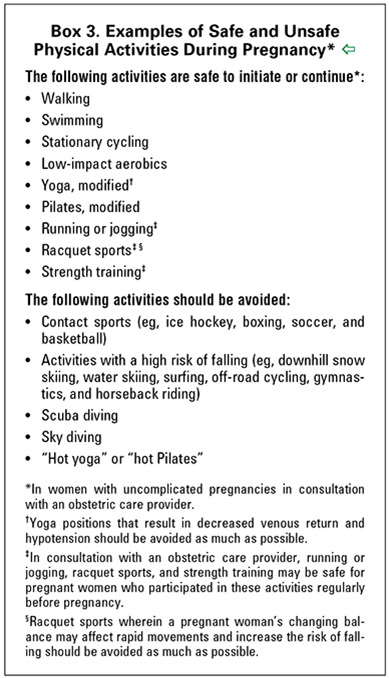
Giving birth can be one of the most physically challenging events in a woman’s life. After my first labor that lasted 19 hours, most of which were spent squatting in a birthing tub or taking walks, I realized for
It’s not just to make ones labor more easeful that physical training is crucial during pregnancy.
Exercise actually reduces the odds of major labor complications by 40%!
Canada has released new guidelines for prenatal exercise updating recommendations from 15 years ago. Based on research involving 675 different studies, Canadian mothers are advised to participate in moderate intensity exercise for 150 minutes a week. [note]https://globalnews.ca/news/4558309/canadian-pregnancy-guidelines-exercise-major-complications/[/note]
Mother’s with certain conditions, like preeclampsia, are cautioned against following the exercise regime.
In particular, the new “2019 Canadian Guideline for Physical Activity throughout Pregnancy” recommends exercise because it benefits both the mother and child reducing the following specific complications:
1) fewer newborn complications (i.e., large for gestational age); and 2) maternal health benefits (i.e., decreased risk of preeclampsia, gestational hypertension, gestational diabetes, caesarean section, instrumental delivery, urinary incontinence, excessive gestational weight gain, and depression; improved blood glucose; decreased total gestational weight gain; and decreased severity of depressive symptoms and lumbopelvic pain).
2019 Canadian Guideline for Physical Activity
6 Canadian Recommendations for Exercise While Pregnant
- “All women without contraindication should be physically active throughout pregnancy” including previously those that were previously inactive, have gestational diabetes mellitus, and are overweight or obese pre-pregnancy.
- “Pregnant women should accumulate at least 150 minutes of moderate-intensity physical activity each week to achieve clinically meaningful health benefits and reductions in pregnancy complications.”
- “Physical activity should be accumulated over a minimum of three days per week; however, being active every day is encouraged.”
- “Pregnant women should incorporate a variety of aerobic and resistance training activities to achieve greater benefits. Adding yoga and/or gentle stretching may also be beneficial.”
- “Pelvic floor muscle training (e.g., Kegel exercises) may be performed on a daily basis to reduce the risk of urinary incontinence. Instruction in proper technique is recommended to obtain optimal benefits.”
- “Pregnant women who experience
light- headedness , nausea or feel unwell when they exercise flat on their back should modify their exercise position to avoid the supine position.” [note]https://csepguidelines.ca/wp-content/uploads/2018/10/4208_CSEP_Pregnancy_Guidelines_En_P2A.pdf[/note]
Yoga is a wonderful way to create ease in the body during pregnancy; however, it should be practiced with knowledge and caution. While carrying a child, a mother’s body prepares for the eventual birth by loosening ligaments, especially around the pelvis. Yoga for pregnant women does have many benefits like improved blood flow, improved sleep, and strengthening muscles in preparation for birth. Most injuries are caused by this” joint laxity”, and doctors warn against holding positions too long or lying on your back
Motionless postures, such as certain yoga positions and the supine position, may result in decreased venous return and hypotension in 10–20% of all pregnant women and should be avoided as much as possible
Physical Activity and Exercise During Pregnancy and the Postpartum Period
The myth that exercising during pregnancy increases the risk of miscarriage is false, as long as you do not have any contraindications.[note]http://americanpregnancy.org/pregnancy-health/exercise-guidelines/[/note]
What are the US Recommendation for Exercise While Pregnant?
US recommendations align with the Canadian guidelines for prenatal physical activity. The US Department of Health and Human Services advises:
Key Guidelines for Women During Pregnancy and the Postpartum Period
Women should do at least 150 minutes (2 hours and 30 minutes) of moderate-intensity aerobic activity a week during pregnancy and the postpartum period. Preferably, aerobic activity should be spread throughout the week.
Women who habitually engaged in vigorous-intensity aerobic activity or who were physicallyactive before pregnancy can continue these activities during pregnancy and the postpartum period.
Women who are pregnant should be under the care of a health care provider who can monitor the progress of the pregnancy. Women who are pregnant can consult their health care provider about whether or how to adjust their physical activity during pregnancy and after the baby is born.
Physical Activity
Guidelines for Americans
2nd edition
According to the American College of Obstetricians and Gynecologists 2015 Committee Opinion:
Pregnancy results in anatomic and physiologic changes that should be considered when prescribing exercise. The most distinct changes during pregnancy are increased weight gain and a shift in the point of gravity that results in progressive lordosis. These changes lead to an increase in the forces across joints and the spine during weight-bearing exercise. As a result, more than 60% of all pregnant women experience low back pain (13). Strengthening of abdominal and back muscles could minimize this risk…
In pregnancy, there are also profound respiratory changes. Minute ventilation increases up to 50%, primarily as a result of the increased tidal volume. Because of a physiologic decrease in pulmonary reserve, the ability to exercise anaerobically is impaired, and oxygen availability for strenuous aerobic exercise and increased work load consistently lags. The physiologic respiratory alkalosis of pregnancy may not be sufficient to compensate for the developing metabolic acidosis of strenuous exercise. Decreases in subjective work load and maximum exercise performance in pregnant women, particularly in those who are overweight or obese, limit their ability to engage in more strenuous physical activities (15). Aerobic training in pregnancy has been shown to increase aerobic capacity in normal weight and overweight pregnant women (16–18).
Physical Activity and Exercise During Pregnancy and the Postpartum Period
Physical exercise is so important to human health at all stages of our lives, including pregnancy. Not only does remaining active while growing a baby in your belly make you feel better as your body changes, it actually reduces the risk of certain complications. Additionally, physical activity while pregnant makes for a more easeful birth and quicker recovery. Perhaps it even plants in utero memories that will transfer to a healthy lifelong habit of exercise to your child.

Leave a Reply